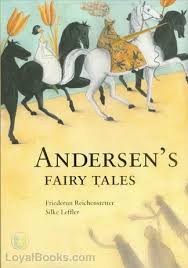The Leap-Frog
byThe Leap-Frog begins not with fanfare, but with the quiet presence of a contender who surprises everyone by saying very little. A challenge is announced by a king who offers his daughter’s hand to whichever creature can leap the highest. Drawn to this opportunity are three distinct participants: the nimble Flea, the elegant Grasshopper, and the silent, unnoticed Leap-frog. Each boasts in turn, the Flea of his ancestry and how he has danced in royal boudoirs, hopping lightly but with flair. The Grasshopper, in his fresh green coat, sings of ancient temples and noble gardens, presenting himself as both artistic and refined. Onlookers nod at their confidence, mistaking their eloquence for actual talent. Yet the Leap-frog says nothing. This silence, instead of discrediting him, fascinates the court. The housedog, a veteran of royal manners, nods approvingly, noting a certain wisdom in the Leap-frog’s posture, as if he sees what others cannot.
When the moment of the jump arrives, anticipation hangs thick in the air. The Flea jumps high, but no one notices because he is too light to follow with the eye. The Grasshopper leaps just as he promised, his motion graceful and poetic, landing squarely on the king’s chest. A fine jump, surely—but it ends in flattery. Then comes the Leap-frog. Without flourish or fuss, he launches forward—not just into the air but onto the very lap of the princess. The king is delighted, interpreting this leap as not only impressive but intentional. He declares the Leap-frog the winner, marrying him to his daughter at once. The other two contenders try to protest, claiming favoritism or trickery. Yet the decision stands. What mattered most, the king said, was the direction of the jump. A leap toward love showed more purpose than a leap for applause.
In the aftermath of the event, the court buzzes not with complaints but with admiration for how things played out. Those who had dismissed the Leap-frog now praise his character. The old councillor affirms that his earlier predictions were correct; the Leap-frog’s back, smooth and wise-looking, hinted at greatness. The housedog barks in agreement, now sitting proudly beside the frog-prince. Meanwhile, the Flea and the Grasshopper continue to talk about themselves to anyone who’ll listen, unaware that the world has moved on. The Leap-frog, still mostly silent, carries himself with quiet pride, now elevated by the very thing no one saw coming—his action. The tale ends as whimsically as it began, leaving a trace of laughter and a note of reflection.
Andersen’s story, cloaked in humor, offers a sharp commentary on appearances and true worth. It reminds readers that action can outshine words and that the most underestimated individuals often carry the greatest potential. In today’s world, where attention is often won by loudness and visibility, The Leap-Frog stands as a parable of quiet determination. It shows how patience, humility, and timing can achieve what arrogance cannot. While the Flea and Grasshopper relied on charm and history, it was the Leap-frog’s meaningful leap—a choice rooted in intuition rather than performance—that truly changed his fate. This story isn’t just for children. It echoes through boardrooms, classrooms, and daily interactions, suggesting that substance quietly wins in the end.
This tale also nudges readers to look beyond what’s loudest in the room. The king’s decision, though amusing, is layered with insight. He recognizes not only the highest leap but the one with the most thoughtful landing. The story thus encourages a reevaluation of how success is measured—not just by spectacle, but by where one chooses to land and who is elevated in the process. The Leap-Frog jumps farther than expected, not just in the story, but in its moral reach. It’s a light tale with a deep footprint, reminding us that sometimes the quietest leap makes the loudest impact.

